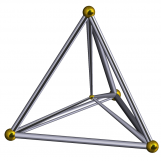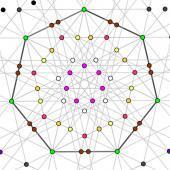-
Content count
62 -
Joined
-
Last visited
About Null Simplex
-
Rank
- - -
- Birthday 11/27/1993
Personal Information
-
Location
Los Angeles
-
Gender
Male
Recent Profile Visitors
2,618 profile views
-
Existence.
-
You claim to be one of the few people on this planet who understands time thoroughly so I’d be interested in a metaphysical breakdown into the nature of time (and perhaps it’s relationship to space). My guess is that it would be too advance a video for you to put it on your Youtube channel and it would instead be something you would put in one of your paid programs, but I’d still like to see it on your YT channel if possible.
-
Perhaps you are still in the process of teaching yourself how fo best utilize AI, but I think a video demonstrating how you use AI as a learning tool could be valuable. To you these things may be obvious, but for many of your students these tips could get help us started with using AI for inquiry rather than just shallow conversation and fun artwork. Probably not as interesting as some of your other videos, but it may be useful. Things like specific techniques and types of questions that people should be asking would be appreciated.
-
-

Null Simplex replied to Natasha's topic in Spirituality, Consciousness, Awakening, Mysticism, Meditation, God
-
Even fruit juice is mildly alcoholic. Hell, nonalcoholic wine is still 0.5% alcohol. Try not to worry about it. Tiny quantities of alcohol won't do anything to you. It's moderate to heavy consumption that you should be weary of.
-
By far the simplest explanation I’ve encountered for the intuition and fundamentals for what a neural network really is. If, like me, you’ve found yourself wondering how a neural network works but would get lost when the person explaining represents the neural network as a graph with nodes and edges connecting the nodes, then this is the video for you! It succinctly illustrates how an AI can take massive amounts of data and output something useful. PS: Thanks for the videos and Youtuber @LastThursday. Very interesting.
-
Primes have always been computable. The issue is they cannot be computed quickly.
-
Here are some videos on game theory, one of the most practical branches of mathematics. I believe that all children should learn some form of the Prisoner's Dilemma by the time they are in high school, if not sooner. What's important about the Prisoner's Dilemma is that it shows why, mathematically, selfishness emerges even when selflessness yields a more optimal situation for everyone, which feels like a relevant concept for this forum. What I found most interesting about this video is that even in this crude, overly simplified mathematical model about a game involving two entities which choose to either compete or cooperate, the most successful entities had 4 qualities: They were nice, forgiving, retaliatory, and predictable. This mimics the qualities of someone in the real world who would be good to cooperate with without being a pushover. Specifically, tit-for-tat, the most natural and obvious strategy, was the most effective overall. I absolutely love when simple mathematical models are able to capture intuitive aspects of physical reality. Counter intuitively, despite the fact that Tit-for-Tat can never outscore it's opponent in an individual match, it outscores everyone when all of the scores in the tournament are summed together. On the opposite end of the spectrum, the most selfish strategy can never lose an individual round, however it scores very few points throughout the entirety of the tournament, mimicking how selfishness may be a good short term strategy but a poor long term strategy. Here are some game theory videos by Primer showing how selfishness and selflessness could have evolved through natural selection. I was already planning on sharing Primer's videos on game theory, but as soon as I saw Veritasium posted a video on the topic, I realized now would be the perfect time to share the game theory videos.
-
Everyone knows about circular portals. Here's a generalization of that idea using knot portals. In the first video a trefoil knot, the second simplest knot after a circle, is used to connect six different universes depending on which angle you view the knot from. Here's a lecture on knot portals from the mathematician who created the concept.
-
Beautiful video demonstrating a simple editing technique which isolates motion in footage. It demonstrates how a shift in perspective can drastically change the context of something while adding another layer of depth to it. This technique seems both practical and fun. Here’s a second video demonstrating how similar techniques have medical and industrial applications.
-
Usually when people think of noneuclidean geometry, they think of hyperbolic space or sometimes spherical. But for 3 dimensional spaces, their are 8 different types of geometries which are possible (if I understand the theorem correctly). This first video is a tour through these 8 geometries using balls to demonstrate how space and light curves in these different geometries. In at least one of these geometries, shapes which in our flat, Euclidean space are deemed paradoxical or merely optical illusions created by playing with perspective on a 2D image are in fact viable objects in these realities. Here is one such shape, the Penrose Triangle. Clearly this shape cannot work in our world. However, in Nil Geometry, the shape is perfectly valid due to the twisty nature of the space. Here is another such example of an impossible shape which is possible in Nil Geometry, the Penrose stairs. These stairs have you either constantly ascending or descending depending on which direction you circle them, and were featured prominently in the film Inception. This video shows what it would be like to walk up a set of Penrose stairs in Nil geometry where it is possible to constantly ascend or descend. When your grandparents talk about walking up hill both ways to and from school, they actually lived in a Nil reality.
-
A physical simulation of half of a hyperbola and waves originating and propagating from the focii of the hyperbola. The hyperbola reflects the waves, but due to the properties of a hyperbola, it appears that the waves go straight through the hyperbola, creating perfect circles centered at the focii despite the circles being reflected. This video is a similar concept but for the sister of the hyperbola, the ellipse. Visually this simulation is boring, but mathematically I find it interesting. Another interesting video on the reflective properties of an ellipse. This one is more visually stimulating than the previous ellipse video.
-
A video on a very strange sequence of numbers with large implications on various branches of mathematics, some of which are very abstract and completely counter intuitive. For example, if one could compute the 27th term of this sequence, than we would automatically know whether or not the Goldbach conjecture is true or false. Similarly, the Reimann Hypothesis can be proven to be true or false if the 744th term of this sequence can be computed. There are terms of this sequence whose value can NEVER be proven to be true or false (true but unprovable), meaning the term has a definite value, but there is no way to tell what that value is given the type of mathematics we use today. It's not a matter of using more advanced mathematical techniques within our current mathematical axioms, you would have to use different mathematical axioms to begin with. Here is a follow up video that I had not watched yet when I shared the first video. This video basically goes into more detail of some of the strange properties of the Busy Beaver's Sequence mentioned in the original video. This video is more interesting than the original video, since it demonstrates that when a finite system like mathematics goes meta, it runs into strange issues involving the nature of infinity. Here, this sequence looks at all computable algorithms with n states which halt when given an infinite string of all 0's. However, the sequence itself is not computable after a certain point. Very counter intuitive. In addition, it links the Busy Beaver's Sequence to the famous Collatz Conjecture.
-
Not sure if this has been posted before. Didn’t want to search all 100 pages.





